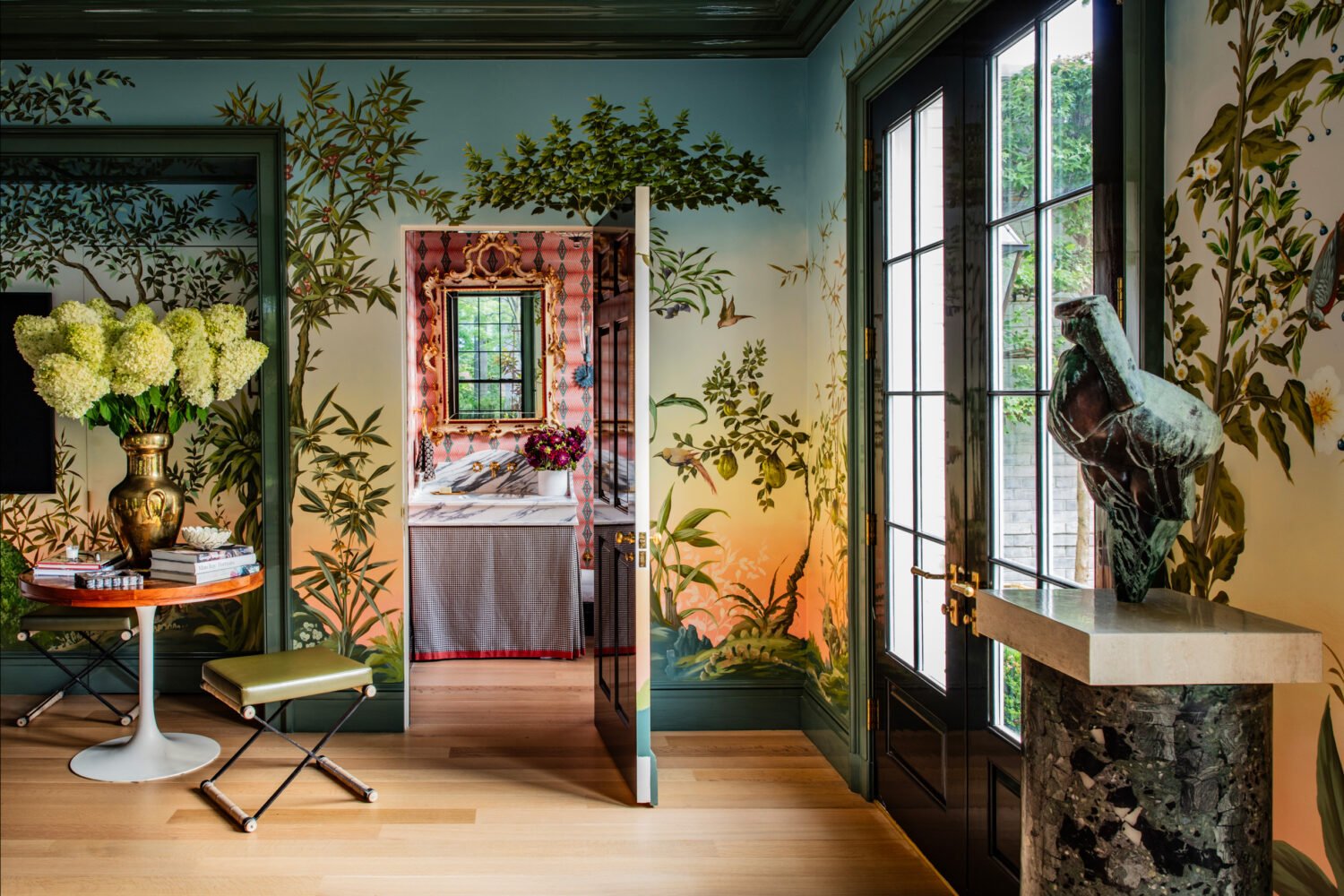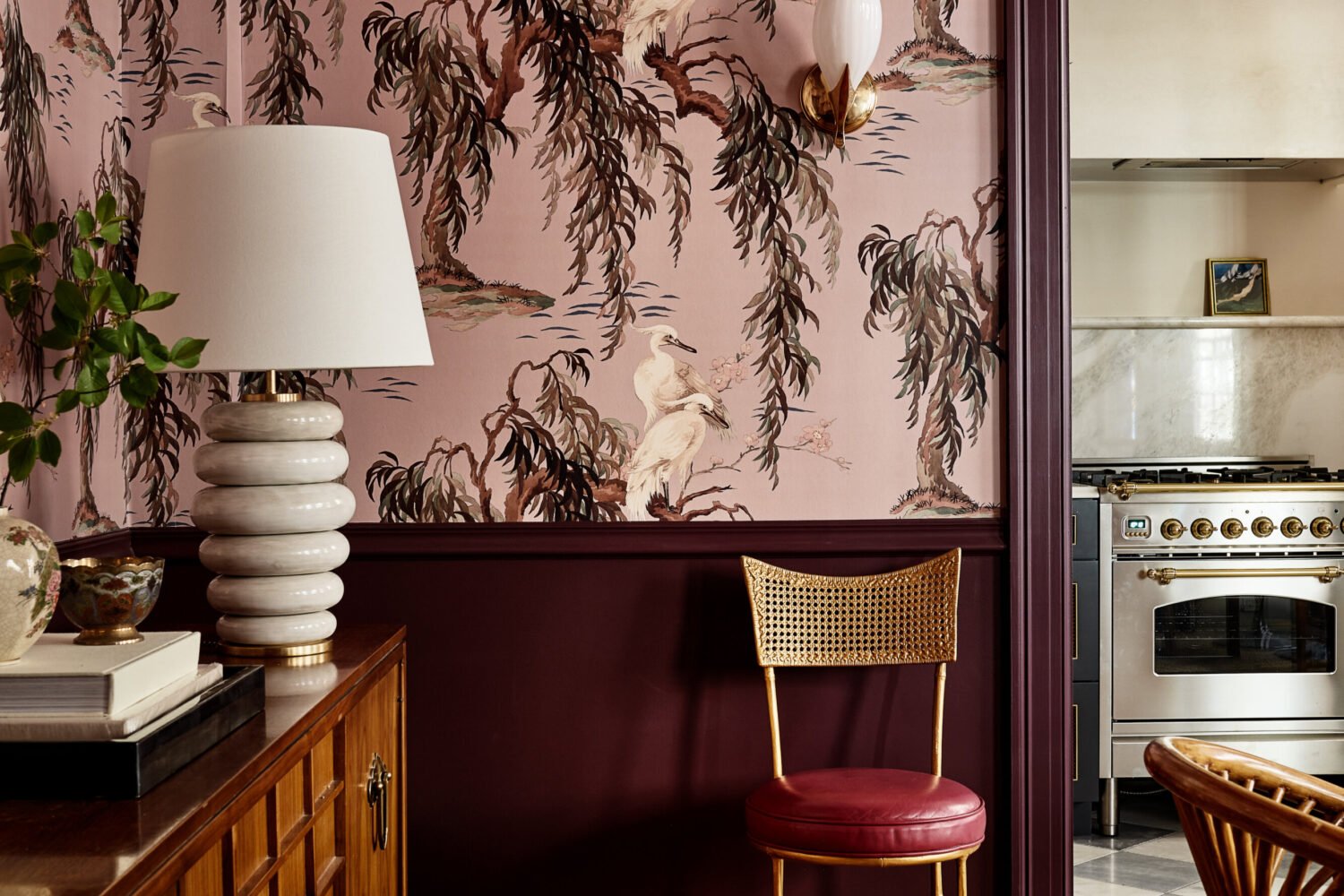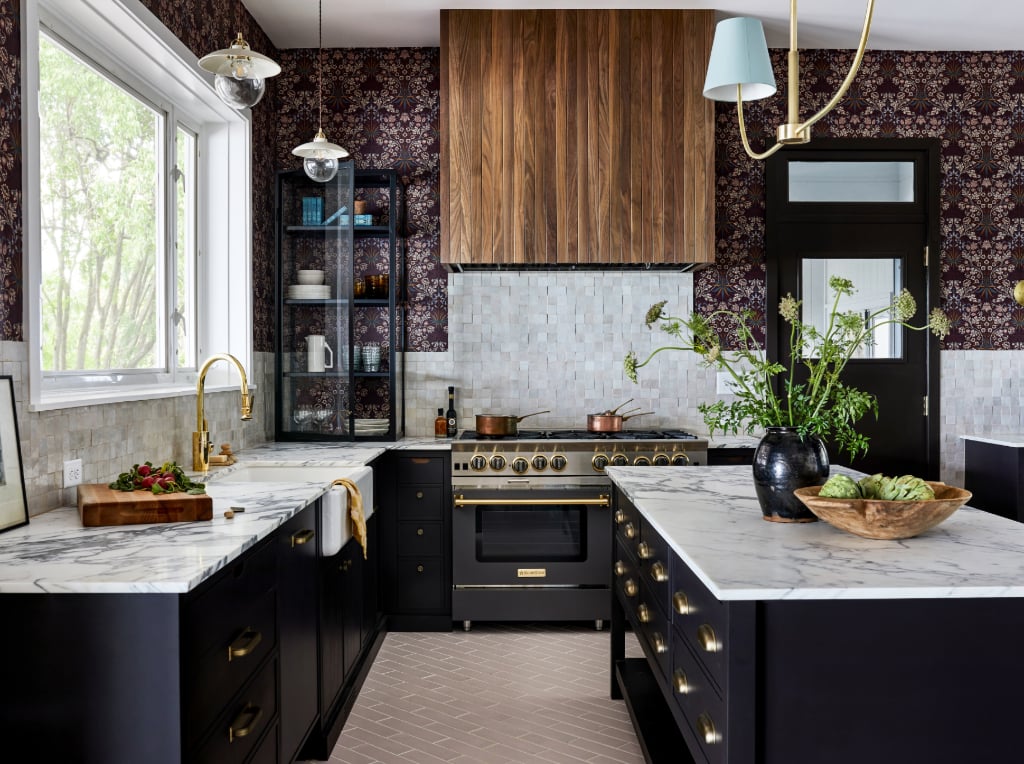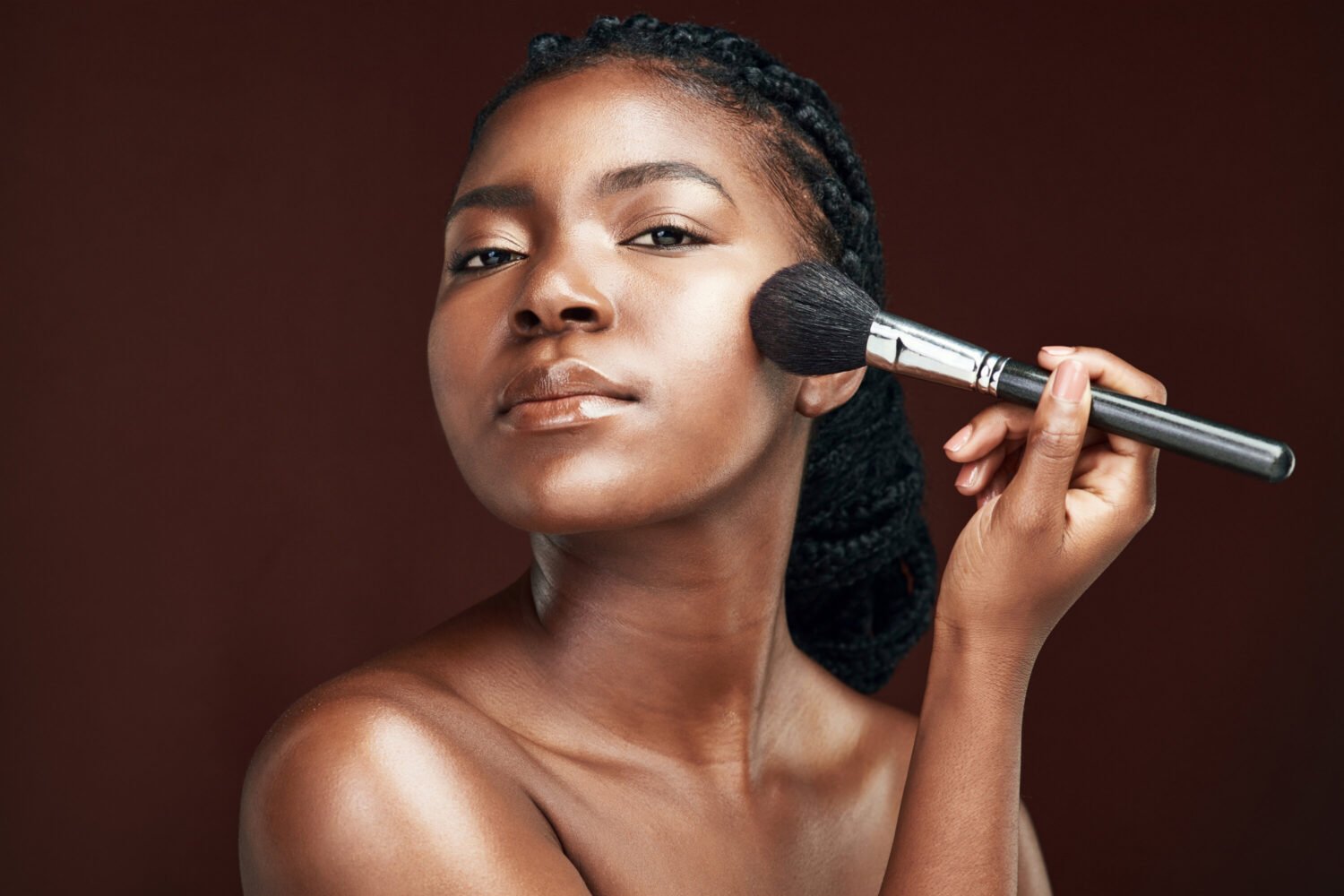Paul Corrie, of DC’s Paul Corrie Interiors, says that since Covid, more clients have requested that he incorporate freestanding tubs into bathroom designs. “There became a greater appreciation for wellness and rejuvenation,” he says.
Shannon Claire Smith, of Shannon Claire Interiors, has seen the same uptick in interest. “There’s something really purposeful about it,” she says. “This one single thing is meant for you to take a moment to relax. Sure, it’s functional, but it’s not as functional as, say, a standalone shower, so the idea that you can take up space in your home for something so objectively relaxing is what draws me to a basin tub.”
It helps that today’s basin bathtubs are more stylish and ergonomic than those of decades past. “The designs are more comfortable, and they allow for better soaking,” Corrie says. They also, he adds, “can make for a wonderful jewelry-like statement.”
Considering a freestanding tub of your own? Designers suggest you keep the following factors in mind.
You May Need Less Space Than You Think

If you aren’t sure you have room for both a walk-in shower and a freestanding bathtub, keep in mind that a separate tub can have a smaller footprint than a built-in, because the latter has a surrounding deck. “This can make a significant difference when working in rowhouses and condos, where every inch matters,” says designer Sara Swabb, founder of Storie Collective in DC. Also: “In small bathrooms where our clients want both a tub and a walk-in shower, we have had success with freestanding tubs that have a smaller footprint in length and width but a greater height.”
Still, separate showers and tubs obviously take up more room than a bathtub/shower combination. Given that tubs are associated with relaxation, you won’t want to have to contort yourself to enjoy yours.
Pay Attention to the Details Around the Tub

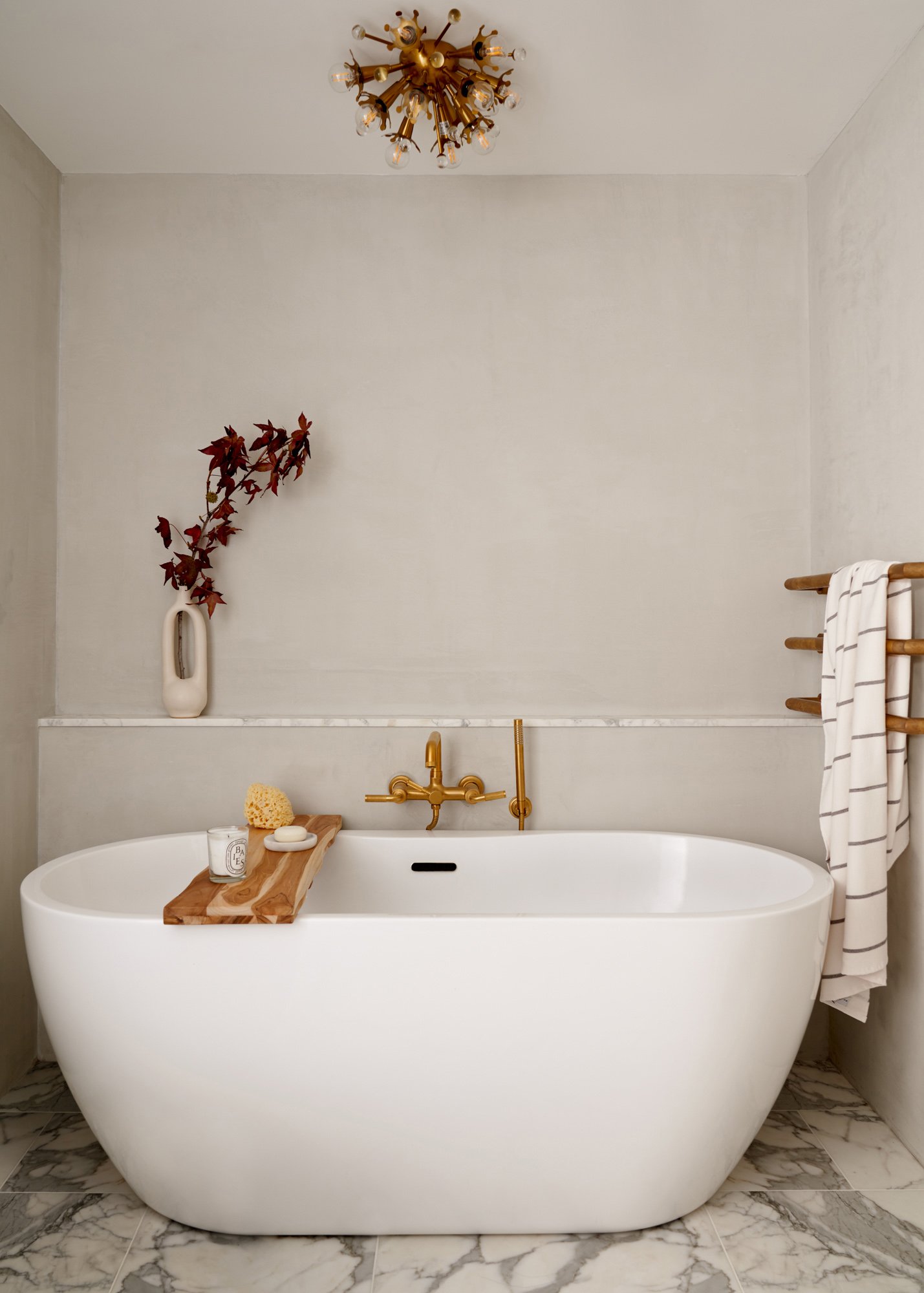
After you’ve selected a bathtub, think about what you want under it—because a freestanding model’s lighter footprint means the eye will also be drawn to the flooring you choose. Swabb suggests setting off the tub against a striking engineered hardwood or a graphic tile.
And unlike built-ins, freestanding tubs don’t offer ledges that can provide valuable storage, so you’ll want to consider adding shelves, niches, or even just a small table beside it. “There’s nothing worse than being in a tub and having to reach over the side to pick up your bottle of shampoo off of the ground,” Smith says.
Try to Avoid Acrylic or Two-Piece Tubs
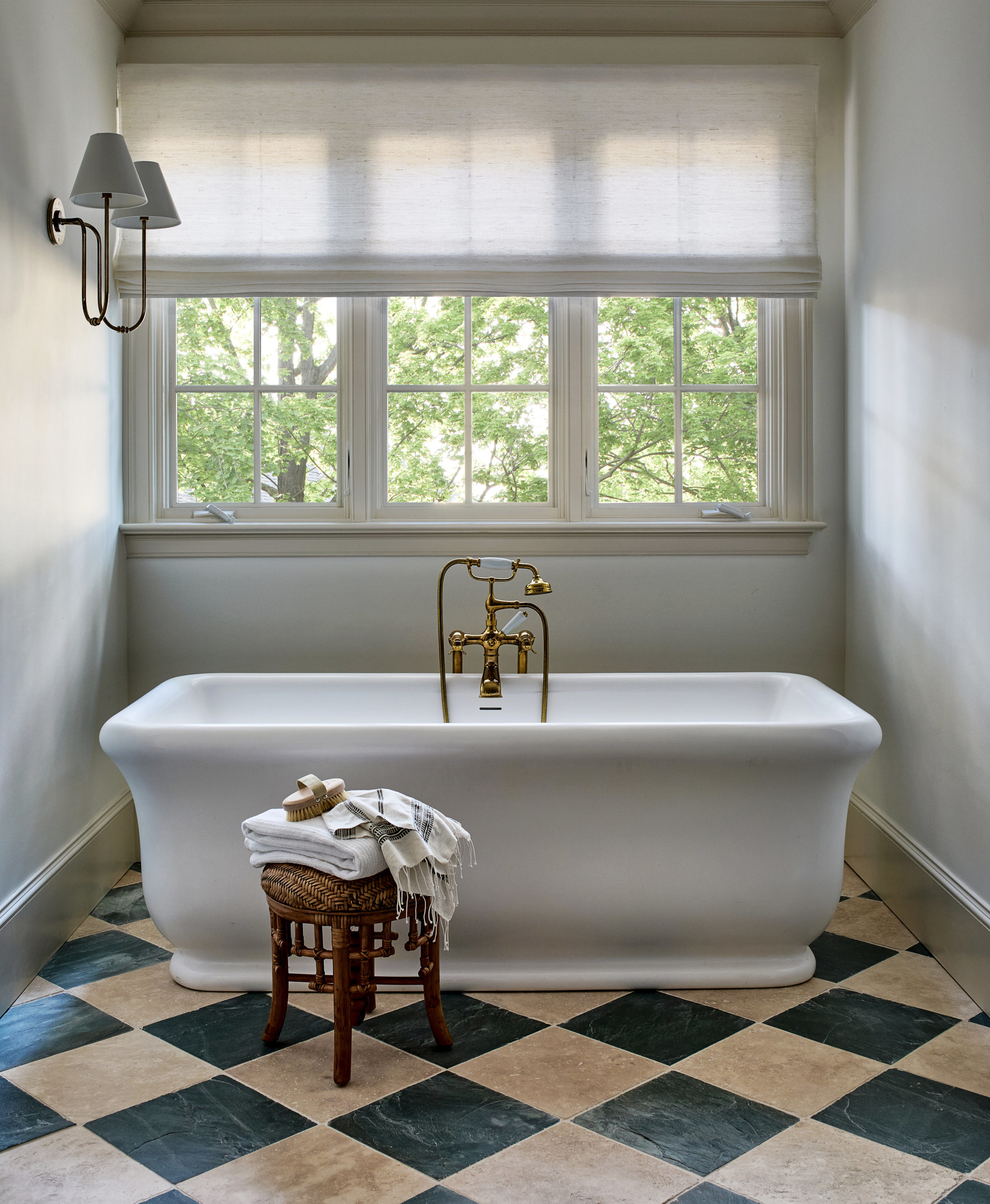

When possible, Smith prefers to steer clear of acrylic styles or those that come in two pieces. “If you have to get an acrylic tub because of budget or space restrictions, try to get one that is one single piece of acrylic, versus a base and basin,” she says. “Anyone who’s taken a bath in a two-piece acrylic tub knows how it creaks and squeaks and takes away from the relaxing experience.”
Call a Contractor
Before buying a freestanding tub, you may want to confer with a contractor about the feasibility and installation. “You might need to reinforce flooring or joists,” Swabb says, “or ensure that plumbing is in very specific locations to accommodate the tub.”
This article appears in the August 2024 issue of Washingtonian.



